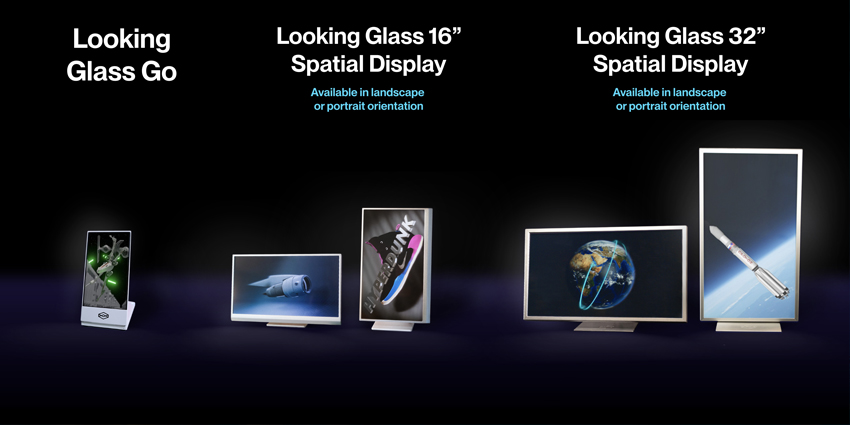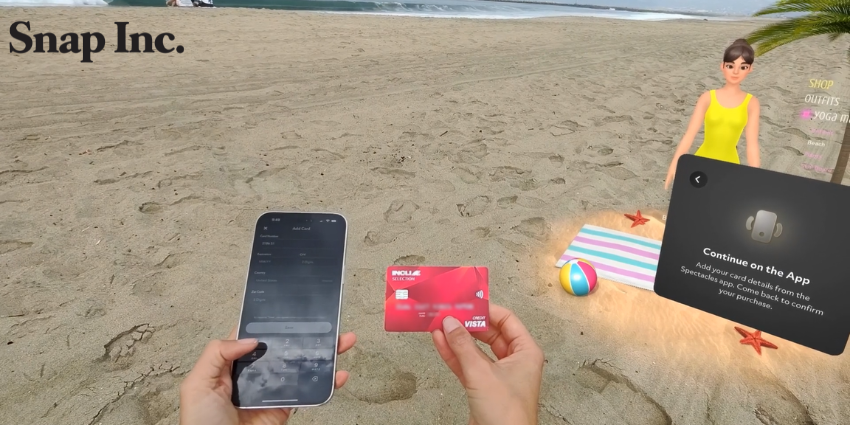Looking Glass, an XR display manufacturer, recently revealed that new spatial display products will be available for enterprise audiences this month.
The new product rollout includes devices that aim to enhance the firm’s portfolio of 3D monitors. These monitors allow users to experience a spatial computing desktop experience with additional integrated technologies.
Looking Glass’ new displays are a great example of how XR and spatial computing technologies are present in various end devices, not just AR/VR/MR headsets.
Starting this month, Looking Glass will distribute 16-inch and 32-inch XR displays. The firm is also rolling out the Looking Glass Go, a more straightforward consumer display device.
Shawn Frayne, the Co-Founder and CEO of Looking Glass, said:
We’re not just starting to ship a brand new generation of spatial displays; we’re entering a new phase of spatial computing. Our goal has always been to put holograms in the hands of everyone.
The new Looking Glass displays allow users to work on 3D-based workflows using interactive real-time models with which users can interact hands-on as an AR visualisation via tracking cameras.
The displays are suited for use cases such as product design procedures. The 16” and 32” displays allow professionals to collaborate over a single spatial display. Meanwhile, the Looking Glass Go product will enable consumers to turn 2D images into 3D spatial visualisations.
Frayne noted that “over the years,” Looking Glass moved closer and closer to putting “holograms in the hands of everyone,” thanks to work with industry collaborators Pixar and NVIDIA Research. The recent device rollout marks a new chapter in this journey.
Frayne also added:
Today we’re taking an even bigger step by bringing the power of headset-free holograms to individuals and enterprises with all sizes of Looking Glass spatial displays. There’s never been a better time to make the leap from the flat world of today’s apps, media and memories into a richer, more lifelike world of 3D holograms that you can experience together with others. I promise it’s a lot easier than you might think. See you there in the future.
Looking Glass: New Device Details
The enterprise-focused Looking Glass 16” and 32” spatial displays provide a 3D computing experience that reacts in real-time. A spatial computing 3D hologram can be seen by various users, no matter their viewing angle, with tracking cameras able to show a 3D element relative to a team member’s location.
Moreover, the devices come with innovative interaction and collaboration features, such as touchless gesture control, to deliver a fresh method of spatial content interaction without relying on bulky and restrictive head-mounted devices.
The Looking Glass displays leverage the first-ever Model Viewer software, which allows teams to collaborate on FBX, OBJ, GLTF, STL, PLY, and 3MF models as interactive spatial assets. The device also has plugins for RT3D content development platforms like Unity, Unreal, Blender, WebXR, and a first-party SDK.
On the other hand, the consumer-grade Looking Glass Go allows users to replicate 2D images as a spatial rendering on a smaller 6-inch display with PC and Mac support.
Looking Glass provides an accompanying mobile application for the Go model that aims to allow any user, regardless of knowledge, to have fun with spatial renderings.
In addition to the mobile app, Looking Glass aims to increase consumer understanding of XR content creation by including consumer devices with Unity, Unreal, plugins, and content libraries. This allows users to customise 3D renders with extra assets, with no programming knowledge required.
Looking Glass sells its 16” Spatial display for $4000, while the Looking Glass 32” requires direct contact with the firm. The consumer-grade Go device is far more affordable, assumedly to push technology adoption at a $299 price.







